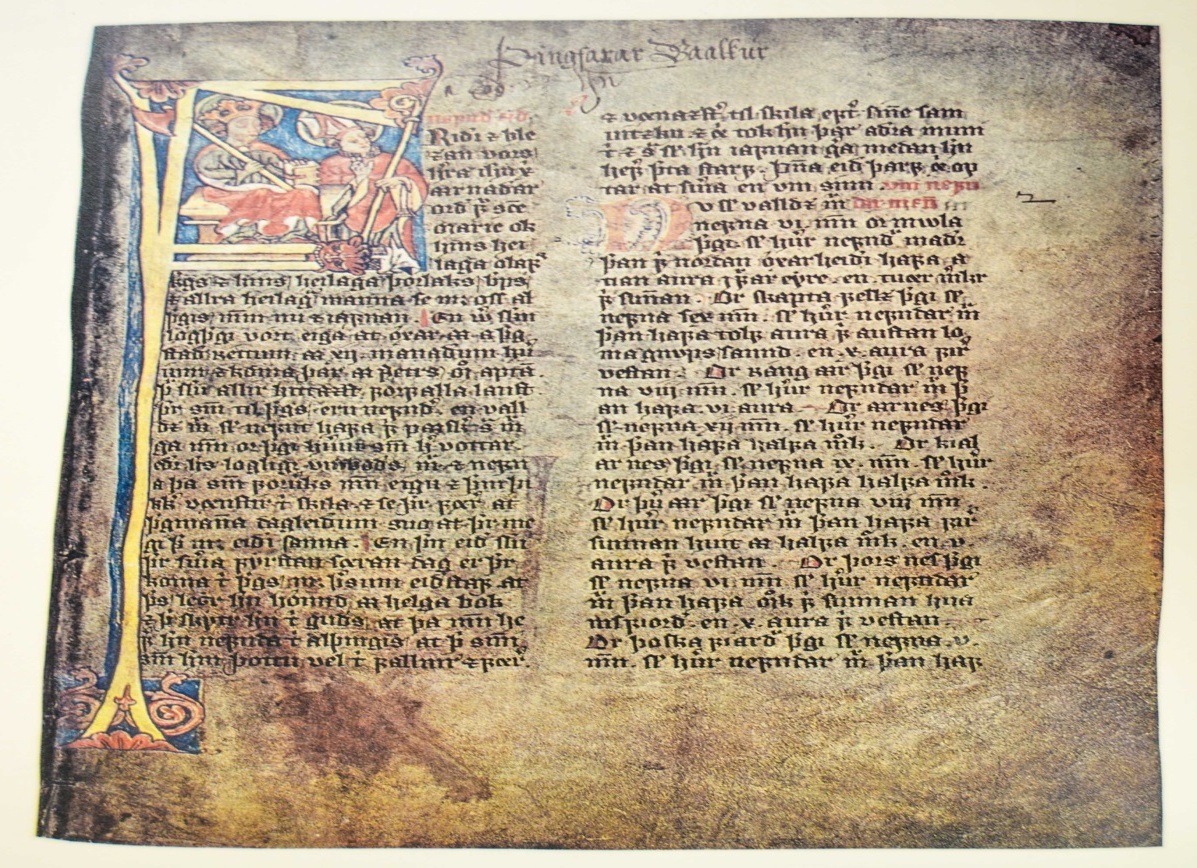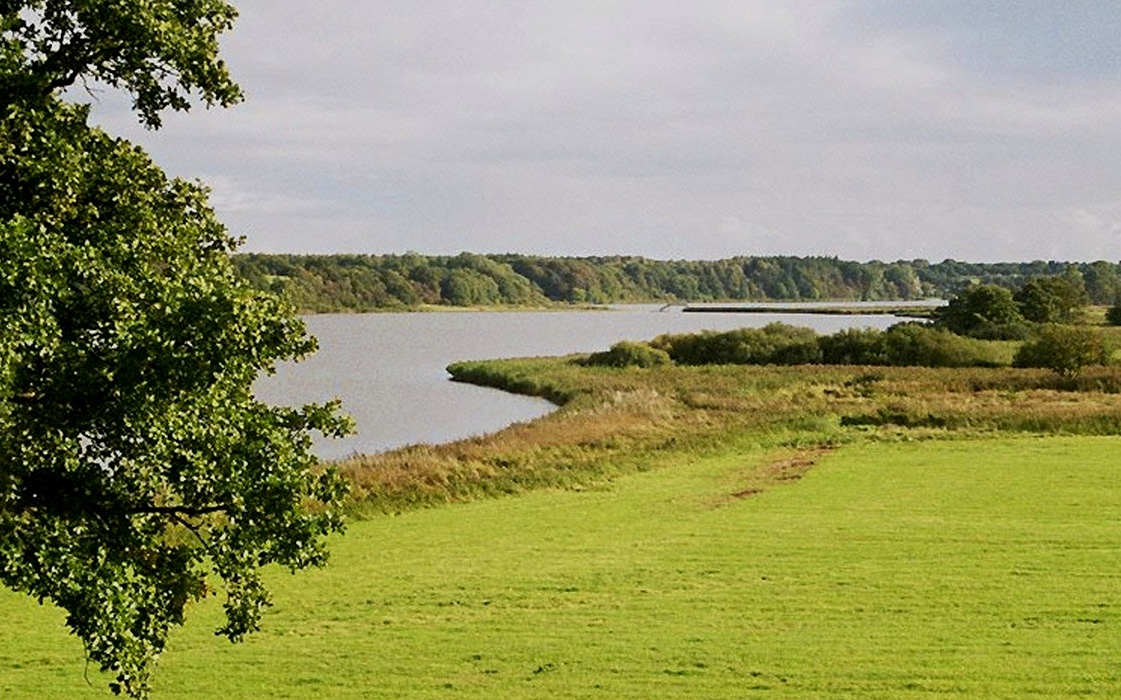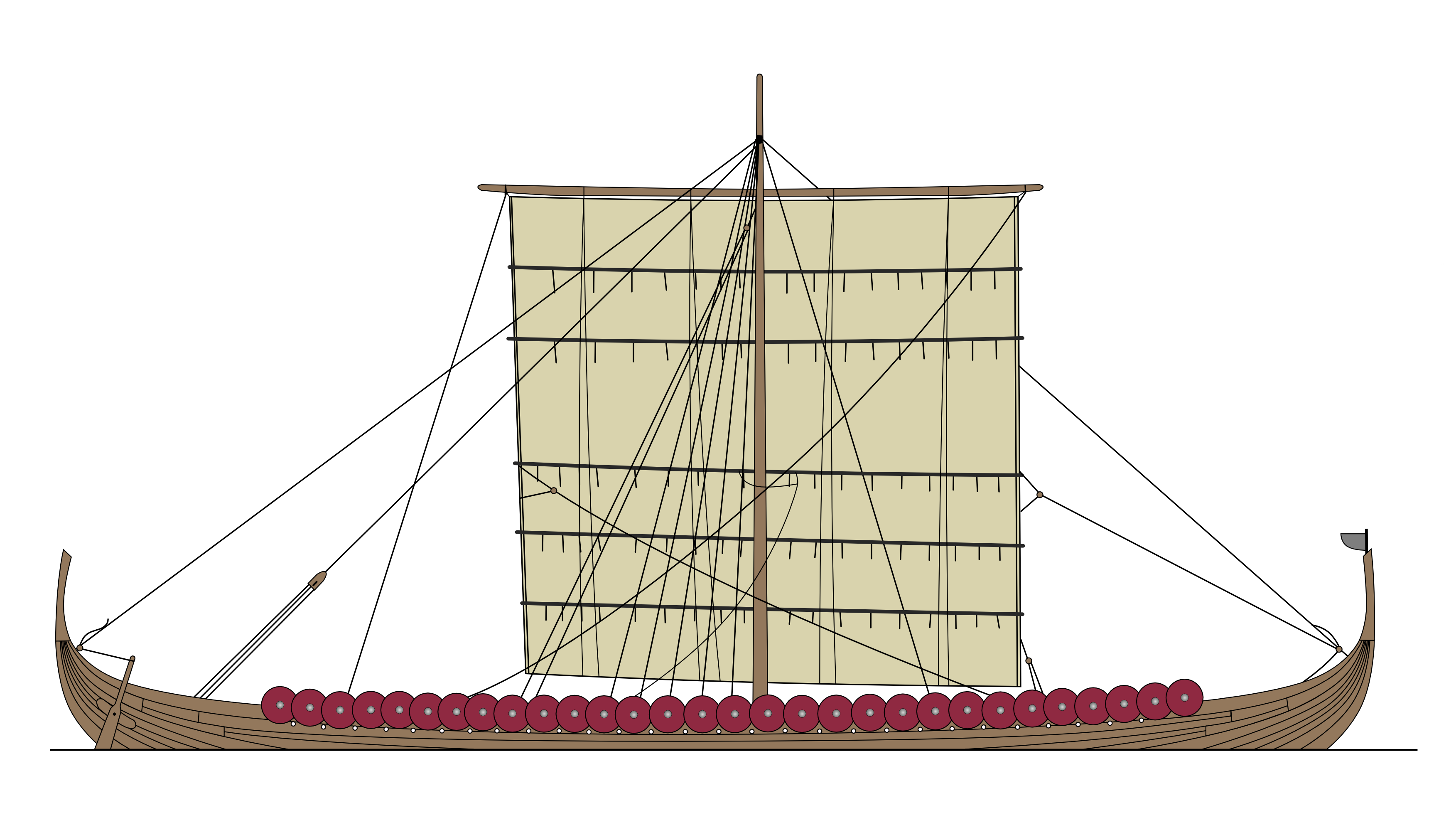|
Bóndi
Bóndi (also húsbóndi, (pl.) bændr in Old Norse) was the Norse core of society, formed by farmers and craftsmen in the Scandinavian Viking Age, and constituted a widespread middle class. They were free men and enjoyed rights such as the use of weapons and the privilege to join the Thing as farm-owning landlords. The profile is specified in '' Rígsthula'', a Scandinavian legend describing the god Ríg lying with three couples to procreate and give birth to the three social classes: thralls, karls (or bændr) and jarls. The poem describes the image and behavior as it should be, and the type of work expected at each. Karl The Norse mythology cites Karl as a result of the illicit relationship between god Heimdal and mortal Amma. Karl and his wife Snor would be progenitors of the peasants and freemen. The odalsbóndi (owner with hereditary possessions) could give up some of their land to other karls in exchange for loyalty and unconditional support whenever necessary. However, ... [...More Info...] [...Related Items...] OR: [Wikipedia] [Google] [Baidu] |
Goði
Gothi or (plural , fem. ; Old Norse: ) was a position of political and social prominence in the Icelandic Commonwealth. The term originally had a religious significance, referring to a pagan leader responsible for a religious structure and communal feasts, but the title is primarily known as a secular political title from medieval Iceland. Etymology The word derives from , meaning "god".Byock, Jesse L. (1993). "Goði". Entry in ''Medieval Scandinavia, an Encyclopedia'' (Phillip Pulsiano, ed.), 230–231. Garland: NY and London, . It possibly appears in Ulfilas' Gothic language translation of the Bible as for "priest", although the corresponding form of this in Icelandic would have been an unattested . In Scandinavia, there is one surviving attestation in the Proto-Norse form from the Norwegian Nordhuglo runestone (N KJ65),The article ''gotiska'' in ''Nationalencyklopedin'' (1992) and in the later Old Norse form from three Danish runestones: DR 190 Helnæs, DR 192 Flemløse ... [...More Info...] [...Related Items...] OR: [Wikipedia] [Google] [Baidu] |
Old Norse
Old Norse, also referred to as Old Nordic or Old Scandinavian, was a stage of development of North Germanic languages, North Germanic dialects before their final divergence into separate Nordic languages. Old Norse was spoken by inhabitants of Scandinavia and their Viking expansion, overseas settlements and chronologically coincides with the Viking Age, the Christianization of Scandinavia, and the consolidation of Scandinavian kingdoms from about the 8th to the 15th centuries. The Proto-Norse language developed into Old Norse by the 8th century, and Old Norse began to develop into the modern North Germanic languages in the mid- to late 14th century, ending the language phase known as Old Norse. These dates, however, are not precise, since written Old Norse is found well into the 15th century. Old Norse was divided into three dialects: Old West Norse (Old West Nordic, often referred to as ''Old Norse''), Old East Norse (Old East Nordic), and Old Gutnish. Old West Norse and O ... [...More Info...] [...Related Items...] OR: [Wikipedia] [Google] [Baidu] |
Knarr
A knarr () is a type of Norse merchant ship used by the Vikings for long sea voyages and during the Viking expansion. The knarr was a cargo ship; the hull was wider, deeper and shorter than a longship, and could take more cargo and be operated by smaller crews. It was primarily used to transport trading goods like walrus ivory, wool, timber, wheat, furs and pelts, armour, slaves, honey, and weapons. It was also used to supply food, drink, weapons and armour to warriors and traders along their journeys across the Baltic, the Mediterranean and other seas. Knarrs routinely crossed the North Atlantic carrying livestock such as sheep and horses, and stores to Norse settlements in Iceland, Greenland and Vinland as well as trading goods to trading posts in the British Isles, Continental Europe and possibly the Middle East. The knarr was constructed using the same clinker-built method as longships, karves, and faerings. Construction Oak, which was widely available in southern Sc ... [...More Info...] [...Related Items...] OR: [Wikipedia] [Google] [Baidu] |
Grágás
The Gray Goose Laws ( {{IPA, is, ˈkrauːˌkauːs}) are a collection of laws from the Icelandic Commonwealth period. The term ''Grágás'' was originally used in a medieval source to refer to a collection of Norwegian laws and was probably mistakenly used to describe the existing collection of Icelandic law during the sixteenth century. The Grágás laws in Iceland were presumably in use until 1262–1264 when Iceland was taken over by the Norwegian crown. Origins of Icelandic law According to Ari Thorgilsson, the earliest Icelandic laws were modeled on those from the Norwegian west-coast law-province, Gulathing. These were introduced to Iceland by an immigrant from Norway named Úlfljótr, sometime during the 920's. Following several years of modification and revision, Úlfljótr's laws were approved by an initial assembly. Out of this meeting, the annual general assembly known as the Althing was established. Each following summer, Icelanders would convene at Thingvell ... [...More Info...] [...Related Items...] OR: [Wikipedia] [Google] [Baidu] |
Law Of Iceland
Law of Iceland during the Commonwealth (930–1262) was decided by the ''Alþingi'' (Althing). It has changed over the years, but the legislative body is still called the Althing. History Following the settlement of Iceland around the 870s, Iceland lacked a unitary legal system. Already around the year 930, the chiefs of the different regions of Iceland united into a single polity. A people's assembly, the ''Alþingi'', was instituted, meeting annually to exercise both judicial and legislative activities. This included having one lawspeaker (''lǫgsǫgumaðr'') on a rotating basis. His role was to know the law by heart and inform on points of law in legal cases. The first lawspeaker is said to have been Úlfljótr, who gave Iceland its first set of laws. These are thought to have corresponded closely to the Gulating laws from Norway.Nordisk rätt , ... [...More Info...] [...Related Items...] OR: [Wikipedia] [Google] [Baidu] |
Althing
The (; ), anglicised as Althingi or Althing, is the Parliamentary sovereignty, supreme Parliament, national parliament of Iceland. It is the oldest surviving parliament in the world. The Althing was founded in 930 at ('Thing (assembly), thing fields' or 'assembly fields'), about east of what later became the country's capital, Reykjavík. After Iceland's union with Norway in 1262, the Althing lost its legislative power, which was not restored until 1904 when Iceland gained home rule from Denmark. For 641 years, the Althing did not serve as the parliament of Iceland; ultimate power rested with the Norwegian, and subsequently the Danish throne. Even after Iceland's union with Norway in 1262, the Althing still held its sessions at until 1800, when it was discontinued. It was restored in 1844 by royal decree and moved to Reykjavík. The restored Unicameralism, unicameral legislature first came together in 1845 and after 1874 operated in Bicameralism, two chambers with an addition ... [...More Info...] [...Related Items...] OR: [Wikipedia] [Google] [Baidu] |
Icelandic Commonwealth
The Icelandic Commonwealth, also known as the Icelandic Free State, was the political unit existing in Iceland between the establishment of the Althing () in 930 and the pledge of fealty to the Norwegian king with the Old Covenant in 1262. With the probable exception of hermitic Irish monks known as Papar, Iceland was an uninhabited island until around 874. The Icelandic Commonwealth had a unique political system whereby chieftains (''goðar'') established a common legal code and settled judicial disputes at the Althing, a national assembly. However, there was no executive body in Iceland that enforced the legal code. The Icelandic Commonwealth has consequently been characterized as a stateless society. During the 13th century, Iceland came under the control of the Kingdom of Norway. Goðorð system The medieval Icelandic state had a unique judicial structure. The first settlers of Iceland were greatly influenced by their Norwegian roots when creating their own form of g ... [...More Info...] [...Related Items...] OR: [Wikipedia] [Google] [Baidu] |
Découvertes Gallimard
(, ; in United Kingdom: ''New Horizons'', in United States: ''Abrams Discoveries'') is an Collection (publishing), editorial collection of Book illustration, illustrated monographic books published by the Éditions Gallimard in Pocket edition, pocket format. The books are concise introductions to particular subjects, written by experts and intended for a general audience. Created in the style of ''livre d'art'', the collection is based on an abundant pictorial documentation and a way of bringing together visual documents and texts, enhanced by printing on coated paper, as commented in ''L'Express'', "genuine monographs, published like art books". Its creator—Pierre Marchand (editor), Pierre Marchand the "wiktionary:iconophile, iconophile", as remarked by the German graphic designer Raymond Stoffel—was instrumental in moulding the policy and ideals of the collection, which was an immediate success both in France and internationally. The first title (English edition: ''The S ... [...More Info...] [...Related Items...] OR: [Wikipedia] [Google] [Baidu] |
Hedeby
Hedeby (, Old Norse: ''Heiðabýr'', German: ''Haithabu'') was an important Danish Viking Age (8th to the 11th centuries) trading settlement near the southern end of the Jutland Peninsula, now in the Schleswig-Flensburg district of Schleswig-Holstein, Germany. Around 965, chronicler Ibrahim ibn Yaqub visited Hedeby and described it as "a very large city at the very end of the world's ocean." Due to its unique position between the Frankish Empire and the Danish Kingdom, the settlement developed as a trading centre at the head of a narrow, navigable inlet known as the Schlei, which connects to the Baltic Sea. The location was favorable because there is a short portage of less than 15 km to the Treene River, which flows into the Eider with its North Sea estuary, making it a convenient place where goods and ships could be pulled on a corduroy road overland for an almost uninterrupted seaway between the Baltic and the North Sea and avoid a dangerous and time-consuming ci ... [...More Info...] [...Related Items...] OR: [Wikipedia] [Google] [Baidu] |
Birka
Birka (''Birca'' in medieval sources), on the island of Björkö, Ekerö, Björkö (lit. "Birch Island") in present-day Sweden, was an important Viking Age trading center which handled goods from Scandinavia as well as many parts of Continental Europe and the Orient. Björkö is located in Mälaren, Lake Mälaren, 30 kilometers west of contemporary Stockholm, in the municipality of Ekerö. Birka was founded around AD 750 and it flourished for more than 200 years. It was abandoned c. AD 975, around the same time Sigtuna was founded as a Christianity, Christian town some 35 km to the northeast. It has been estimated that the population in Viking Age Birka was between 500 and 1000 people. The archaeological sites of Birka and Hovgården, on the neighbouring island of Adelsö, make up an archaeological complex which illustrates the elaborate trading networks of Viking Scandinavia and their Viking expansion, influence on the subsequent history of Europe. Generally regarded ... [...More Info...] [...Related Items...] OR: [Wikipedia] [Google] [Baidu] |
Carolingian Empire
The Carolingian Empire (800–887) was a Franks, Frankish-dominated empire in Western and Central Europe during the Early Middle Ages. It was ruled by the Carolingian dynasty, which had ruled as List of Frankish kings, kings of the Franks since 751 and as kings of the Lombards in Italy from 774. In 800, Pope Leo III crowned the Frankish king Charlemagne as Roman emperor in return for political protection, disregarding the universalist claims of the weakened Byzantine Empire. The Carolingian Empire is sometimes considered the first phase in the history of the Holy Roman Empire. After a Carolingian civil war, civil war from 840 to 843 following the death of Emperor Louis the Pious, the empire was divided into autonomous kingdoms, with one king still recognised as emperor, but with little authority outside his own kingdom. The unity of the empire and the hereditary right of the Carolingians continued to be acknowledged. In 884, Charles the Fat reunited all the Carolingian kingdoms f ... [...More Info...] [...Related Items...] OR: [Wikipedia] [Google] [Baidu] |
Longship
Longships, a type of specialised Viking ship, Scandinavian warships, have a long history in Scandinavia, with their existence being archaeologically proven and documented from at least the fourth century BC. Originally invented and used by the Norsemen (commonly known as the Vikings) for commerce, exploration, and warfare during the Viking Age, many of the longship's characteristics were adopted by other cultures, like Anglo-Saxons, and continued to influence shipbuilding for centuries. The longship's design evolved over many centuries, and continued up until the sixth century with Clinker (boat building), clinker-built ships like Nydam Mose#Nydam boat, Nydam. The character and appearance of these ships have been reflected in Scandinavian boatbuilding traditions to the present day. The particular skills and methods employed in making longships are still used worldwide, often with modern adaptations. They were all made out of wood, with cloth sails (woven wool), and had several ... [...More Info...] [...Related Items...] OR: [Wikipedia] [Google] [Baidu] |




